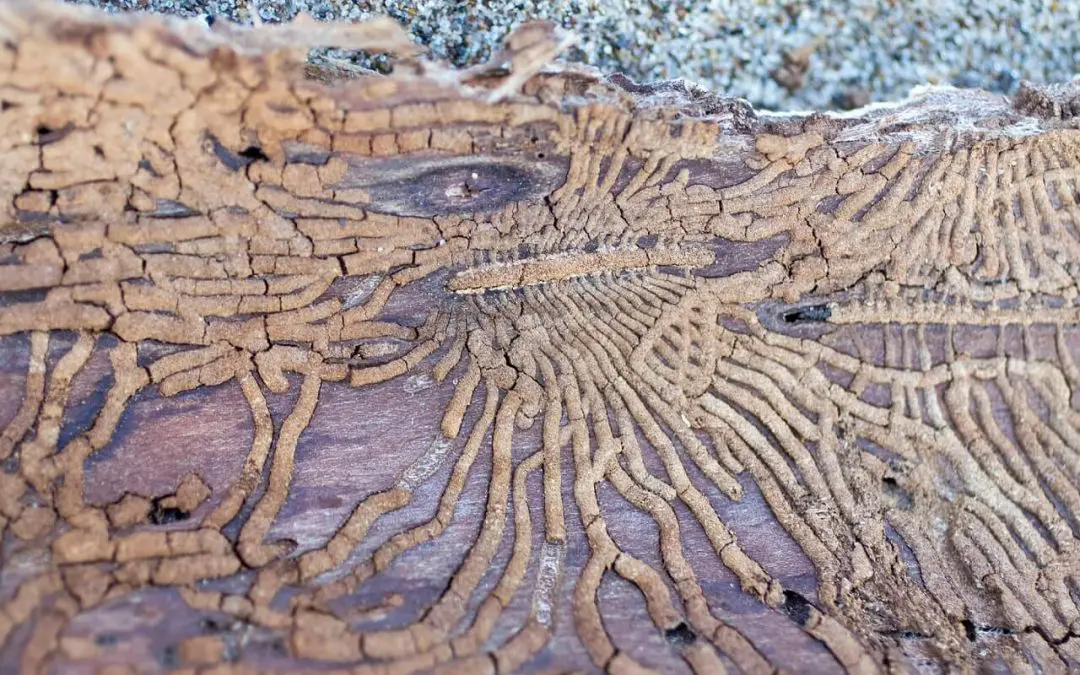Termites can cause a lot of damage long before you even know they’re there. Unlike other pests, they don’t usually leave obvious signs right away. That’s part of what makes them so destructive. They work behind the scenes, eating away at the wood in your home like a slow-moving wrecking crew. By the time visible clues show up, they’ve often been at it for months, even years. That’s why it’s important to know what to look for early. Here are some of the most common signs of termites you should look for in your home.
Mud Tubes on the Foundation are Definite Signs of Termites
One of the most common and visible signs of a termite infestation is mud tubes. These are small, pencil-width tunnels made of dirt and saliva. Subterranean termites build them to travel between their colony in the soil and the wood they’re eating. You’ll usually find them along the foundation, crawlspace walls, or even inside your garage. If you break one open and see white insects inside, those are termites. Even if the tube looks old and dry, that doesn’t mean you’re in the clear. It’s worth getting a professional to take a look.
Hollow-Sounding Wood
If you tap on a piece of wood and it sounds hollow or papery, that could be a red flag. Termites eat wood from the inside out, so the outside surface might look fine, but the internal structure is compromised. Floors may feel spongy, baseboards may give when you push them, and doors might suddenly start sticking for no apparent reason. These can all be signs that termites are feasting inside the walls.
Discarded Wings
Swarming termites are a big red flag. These are the winged version of the insect, and they’re looking to start a new colony. After swarming, they shed their wings, which can pile up on window sills, near doors, or under light fixtures. If you find a collection of tiny, clear wings indoors, especially in spring or after a rainstorm, it’s time to act. That’s not something to ignore.
Signs of Termites Include Frass (Termite Droppings)
Drywood termites leave behind tiny pellets that look like sawdust or coffee grounds. This is called frass. You might find it near window sills, baseboards, or anywhere they’re active. If you sweep it up and more appears a few days later, that’s a sign that termites are still actively chewing through your home. Frass is often overlooked, but it’s one of the more obvious clues once you know what to look for.
Blistered or Bubbling Paint
Blistered or peeling paint could be a sign of moisture, but it can also mean termites. As they tunnel close to the surface of the wood, they can cause paint to lift or bubble. It’s easy to mistake this for water damage, but termites might be to blame if you see it in dry conditions with no leaks.
Sticking Doors and Windows Could Be Signs of Termites
Termites can cause the wood around doors and windows to warp, which makes them hard to open or close. If a door you’ve used every day suddenly starts sticking or a window won’t slide the way it used to, it might not be a seasonal humidity issue. Termite damage can subtly shift the shape of door frames and sills, leading to this kind of misalignment.
Sounds in the Walls
It might sound odd, but if you’re lying in bed at night and hear faint clicking or tapping noises from the walls, that could actually be termites. Some soldier termites make noise by banging their heads against the wood to warn the colony of danger. It’s a soft, repetitive sound, and while it won’t be loud, you may notice it in a quiet house.
FAQs on Signs of Termites
How long does it take for termites to cause serious damage?
It depends on the colony’s size and how long they go undetected. In general, termites can cause noticeable structural damage in just a few months. Left unchecked, they can cause thousands of dollars in repairs over the years.
Are termites active year-round?
Yes. While swarming usually happens in spring, termites eat and build their colonies all year. Warm, humid conditions make them more active, but they don’t take a break in winter—especially if they’re already inside your home.
Can I get rid of termites myself?
DIY termite treatments are rarely effective. You might kill the ones you see, but you won’t eliminate the colony. Termites often live underground or deep within walls, so professional treatment is the safest way to make sure they’re gone for good.
Does homeowners insurance cover termite damage?
Most policies don’t cover termite damage because it’s considered preventable with regular maintenance and inspections. That’s why it’s vital to catch signs early and act fast.
How often should I have a termite inspection?
Once a year is a good rule of thumb, especially if you live in an area known for termite activity, regular inspections can catch problems before they get expensive.
Bronze Star Home Inspections offers home inspections in the Dallas-Fort Worth Metroplex. If you’re buying or selling a home, contact us to request an appointment.

